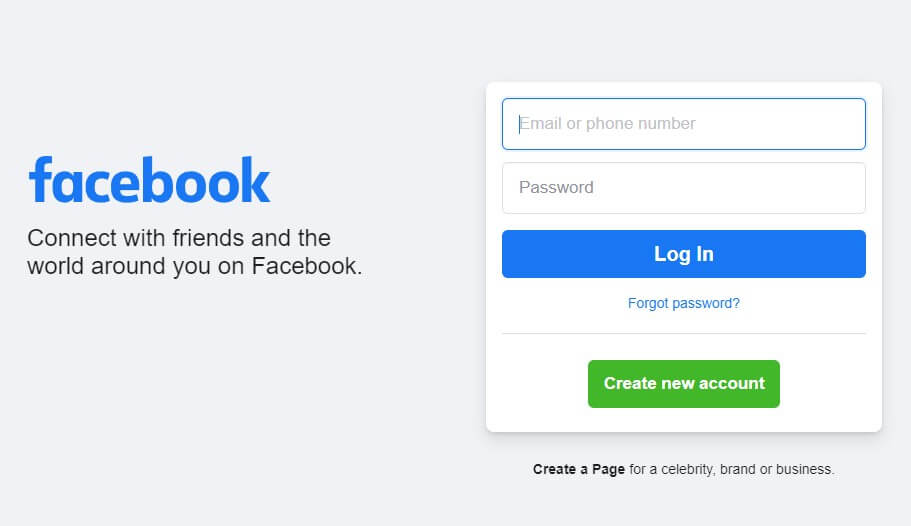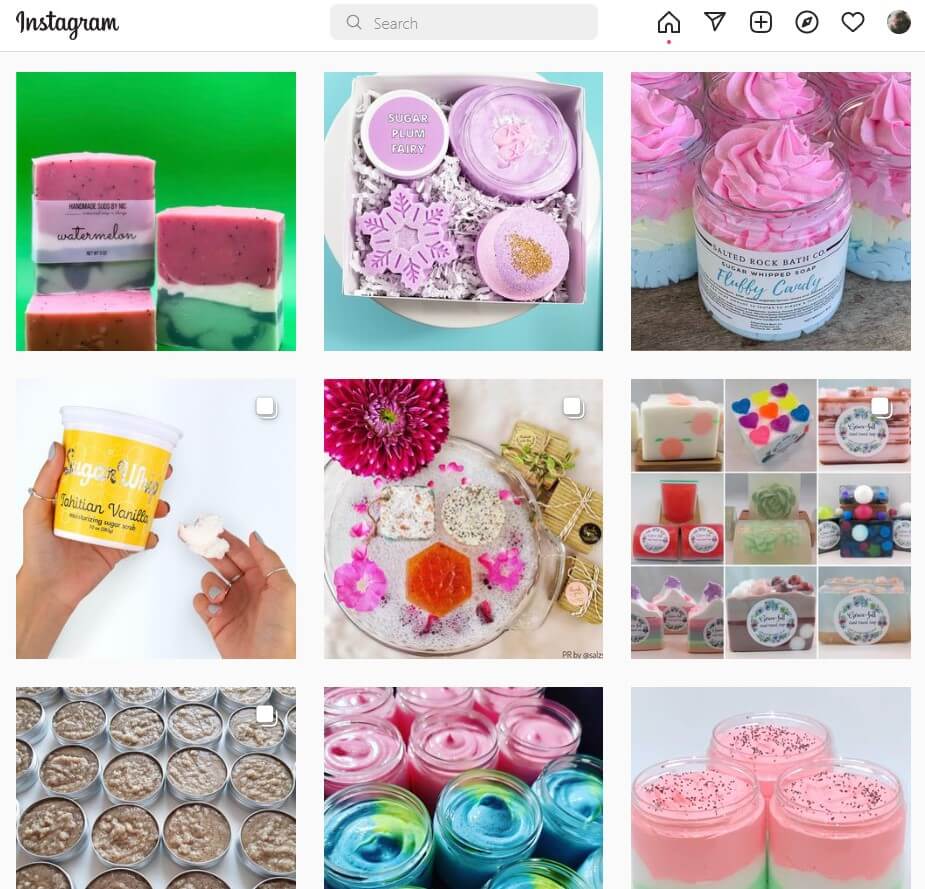How to Promote your Handmade Items Online
A guide to marketing homemade crafts online, so you can build your customer base.

You’ve made your products and created your shop online - now how can you tell the world about it? Here are some ways to promote your business and start bringing in those sales!
Often the easiest part of any business is making your products to sell - the really tough bit is making sure you are promoting your products to the people who are most likely to become paying customers.
As a craft seller, you probably have a set of tools that you consider a “must-have” when building your products. It could be a specific style of brush or a certain brand of carving knife. Whatever it is, you consider it to be an essential part of your creative process.
Just as you have your must-have product-making tools, so too are there a set of must-have craft marketing tools. These are software products or services that can mean the difference between a thriving e-business and a part-time hobby.
In this post, we review some of what we consider to be essential tools and techniques that you should be using for marketing your homemade crafts online.
Take your Etsy business to the next level!
Get your inventory organized with our award winning Etsy inventory software. Track raw materials and product stock levels (in real time!), lot and batch tracking, COGS, pricing guidance and much more. It's your Etsy store's production central.
Friends & Family
This is often the best place to start as it allows you to work on how you are going to present your products, without risking too much in the way of time or money. Ask your friends, family and co-workers what they think about your products.
Concentrate on the wording of how you describe your products and make note if anyone isn’t clear on what your products do - this will help you to refine the words you use in your listings or shopfront. Ask them about how they feel about the packaging and photos - ensure you are asking for positive criticism so you don’t just end up with praise (however nice that may be!). With this in mind, be prepared to hear some things you may not want to hear about your products - remember to take this as positive points to improve on, rather than something that means you will never sell anything. A positive attitude in this part of the process goes a long way!
You don’t have to use your contacts only as market research - these are sometimes where your best customers come from. Friends of friends are often a great source of customers to expand your business, so try to get people talking about your products to others. Facebook in particular is a great online place to do this - the only thing to keep in mind is to make sure that you keep things in moderation!
Social Media
Facebook has a gigantic presence that is difficult to ignore. Many sellers are able to find customers on Facebook and use it to supplement and even overtake their Etsy business.

The biggest downside to Facebook is its lack of customization. When you sell on Facebook, it looks very much like Facebook. There’s relatively little you can do to personalize your Facebook business page.
That said, Facebook has incredible reach–1.93 billion Daily Active Users. Someone in that horde is going to want what you’re offering. You just have to find each other. Thankfully, Facebook provides customers with powerful search tools and a complex algorithm, which helps them find you faster.
Instagram is a marketing mainstay for many handmade sellers. The key is to take advantage of the Instagram community’s love for stunning visual content.

Many crafters like handmadesoapway and Kyle Nouse post high-quality photos to showcase their work, and sometimes share Instagram Stories of their production process or snippets of their every day routine to engage viewers.
Because there’s currently no way to list actual products or capture orders on Instagram, these makers often put links to their Etsy stores or personal e-commerce sites in their profiles in order to encourage viewers to buy.
Tip: LinkTree is a popular option that allows you to curate a list of links to your store.
Tiktok
Tiktok is more than just dances (and has been for quite a while). In fact, many craft sellers are turning to Tiktok to market their products.

Don’t believe me? Check out Yanay, an 18-year old sweet treats maker who posts videos of her delectable creations online and has amassed over a million likes in the process.
Or The Pretty Potato, a Canadian maker who showcases magnetic hanger earrings on her account–and even offers a 10% discount to people who find her on TIktok.
And then you have Dusty Lumber, a self-professed lumber and woodworking addict who has a prominent presence on both Tiktok and YouTube.
Tiktok can work for you, too. All you need is a phone camera, an internet connection, and a sense of style, and you can start attracting potential fans and customers.
Even if you don’t use this yourself, there are lots of others out there that do - and some of them are bound to want to hear about your products!
Try to get a twitter username as close to your business name as possible. If you can’t get your exact name, don’t give up - try adding something like “shop” or “handmade” or “hq” to the end to make it unique.
Once you have your twitter account created, post a couple of things to get in the habit of updating - remember, not every tweet needs to be earth shatteringly exciting - sometimes the most interesting accounts are ones that chronicle a “behind the scenes” view of the business. Post photos of your workshop, your materials, works in progress - these all give a sense of the fact that you are passionate about your work, which is always attractive to customers that like to buy handmade.
Find people in the same field to follow - keep checking what they post to get a good idea of new tweets - don’t be afraid to use this to network and ask questions as this only helps to make your account look active.
Add your twitter account to your business cards, your invoices and in your packaging to make sure that your customers know - this gives you a chance to sell again to your existing customers as they will be reminded of you when they see you tweet.
Facebook Business Pages
Facebook offers a great feature for businesses - Facebook Pages. Pages give you a space on Facebook that is separate to your personal Facebook account that you can use to promote your business. Again, the same tips apply here as with Twitter - post as much as you are able to about your products and your work in progress. Facebook pages also offer interesting features like polls that you can use to ask questions to your fanbase - this can be really handy for deciding on new product ranges to offer.
Again, this is a case where even if you don’t use this personally it’s worth creating an account for your business and posting your products here. It really doesn’t take much to “pin” your products every once in a while - even if you only make a handful of sales from this option, it’s still worth it!
Blogging
This can be a little harder to get results out of nowadays due to the sheer number of blogs out there, but it is worthwhile to get in the habit of posting to a blog every once in a while. Your blog posts don’t have to be lengthy or even regular…you don’t even need to be able to write particularly well: if photos are more your thing, upload photos to your blog with captions. Writing good, interesting and unique content however can be good for SEO, which can pay dividends later down the track as your business grows.
Paid Advertising
Facebook Ads
If you are ready to spend a little bit of money to promote your business, Facebook Ads is a great place to start - it allows you to target very specific interests and other demographics so you can really narrow down to your ideal customer base. You can also set a maximum expense per day, so you can manage your budget quite easily this way. Alternatively, you can experiment with the $5 “Boost Post” feature to try and reach new customers.
Influencers / Bloggers
Find bloggers and influencers that write about the sorts of products you make and contact them to let them know about your product. If it is unique and interesting, they may wish to write about it in their blogs - which gives you free advertising! It all depends on the traffic that each blog gets as to how successful this can be, but this can be a very effective marketing strategy to use. Be prepared for some bloggers to request samples of your work, or even free products in exchange for coverage.
Build a Mailing List
Look for opportunities to ask your customers if they would like to receive a regular newsletter from you. This gives you a great opportunity for repeat sales - especially around holiday periods such as Christmas and Valentines Day. If your mailing list isn’t large, you should be able to send your emails directly - when you get to a stage where you have a large list to send then use a specialised email newsletter app such as Mailchimp or Campaign Monitor, which will handle the email templating and sending for you as well as provide you with indepth stats to see who is reading your mailshots.
Maintain Multiple Sales Channels
These are more than places you sell on, it’s important to treat them like a marketing channel in their own right. More sales channels can sometimes be a good idea to enable you to cast a wider net for the customers you want, however it can be difficult to maintain your inventory across many different sales channels.
If you do choose this approach, it’s important to introduce some sort of system to track your stock - you can start with a spreadsheet or adopt automated craft inventory software like Craftybase. Craftybase integrates with Etsy, Shopify, Wix and a whole lot of other sales channels to allow you to track both your raw materials and product stock levels in the one place.
For Etsy, it’s important to learn the ins and outs of Etsy SEO to ensure that you appear in searches that your potential customers are making.
Conclusion
Despite what we said earlier about these handmade promotional tools being “must-haves,” you don’t have to immediately pick up every marketing technique and tool mentioned above if you’re not comfortable with technology.
Prioritize the ones that solve the most immediate need, whether that’s finding a stable online location for your store, or getting more customers, and then start exploring other tools.
